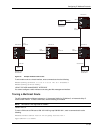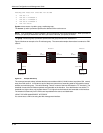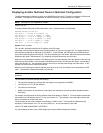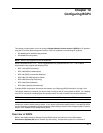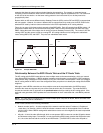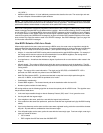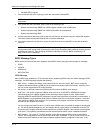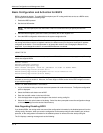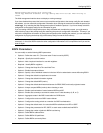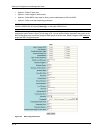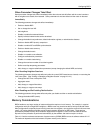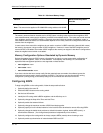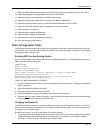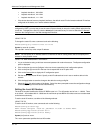
Configuring BGP4
routing switch does not have a loopback interface, the default router ID is the lowest numbered IP address
configured on the device. For more information or to change the router ID, see “Changing the Router ID” on
page 6-25.
• Parameter list – An optional list of additional parameters used in peer negotiation with BGP4 neighbors.
UPDATE Message
After BGP4 neighbors establish a BGP4 connection over TCP and exchange their BGP4 routing tables, they do
not send periodic routing updates. Instead, a BGP4 neighbor sends an update to its neighbor when it has a new
route to advertise or routes have changed or become unfeasible. An UPDATE message can contain the following
information:
• Network Layer Reachability Information (NLRI) – The mechanism by which BGP4 supports Classless
Interdomain Routing (CIDR). An NLRI entry consists of an IP prefix that indicates a network being advertised
by the UPDATE message. The prefix consists of an IP network number and the length of the network portion
of the number. For example, an UPDATE message with the NLRI entry 192.215.129.0/18 indicates a route to
IP network 192.215.129.0 with network mask 255.255.192.0. The binary equivalent of this mask is 18
consecutive one bits, thus “18” in the NLRI entry.
• Path attributes – Parameters that indicate route-specific information such as path information, route
preference, next hop values, and aggregation information. BGP4 uses the path attributes to make filtering
and routing decisions.
• Unreachable routes – A list of routes that have been in the sending router’s BGP4 table but are no longer
feasible. The UPDATE message lists unreachable routes in the same format as new routes:
<IP address>/<CIDR prefix>.
KEEPALIVE Message
BGP4 routers do not regularly exchange UPDATE messages to maintain the BGP4 sessions. For example, if an
HP 9308M configured to perform BGP4 routing has already sent the latest route information to its peers in
UPDATE messages, the router does not send more UPDATE messages. Instead, BGP4 routers send
KEEPALIVE messages to maintain the BGP4 sessions. KEEPALIVE messages are 19 bytes long and consist
only of a message header; they contain no routing data.
BGP4 routers send KEEPALIVE messages at a regular interval, the Keep Alive Time. The default Keep Alive
Time on HP routing switches is 60 seconds.
A parameter related to the Keep Alive Time is the Hold Time. A BGP4 router’s Hold Time determines how many
seconds the router will wait for a KEEPALIVE or UPDATE message from a BGP4 neighbor before deciding that
the neighbor is dead. The Hold Time is negotiated when BGP4 routers exchange OPEN messages; the lower
Hold Time is then used by both neighbors. For example, if BGP4 Router A sends a Hold Time of 5 seconds and
BGP4 Router B sends a Hold Time of 4 seconds, both routers use 4 seconds as the Hold Time for their BGP4
session. The default Hold Time is 180 seconds. Generally, the Hold Time is configured to three times the value of
the Keep Alive Time.
If the Hold Time is 0, a BGP4 router assumes that its neighbor is alive regardless of how many seconds pass
between receipt of UPDATE or KEEPALIVE messages.
NOTIFICATION Message
When you close the router’s BGP4 session with a neighbor, or the router detects an error in a message received
from the neighbor, or an error occurs on the router, the router sends a NOTIFICATION message to the neighbor.
No further communication takes place between the BGP4 router that sent the NOTIFICATION and the neighbor(s)
that received the NOTIFICATION.
10 - 5



